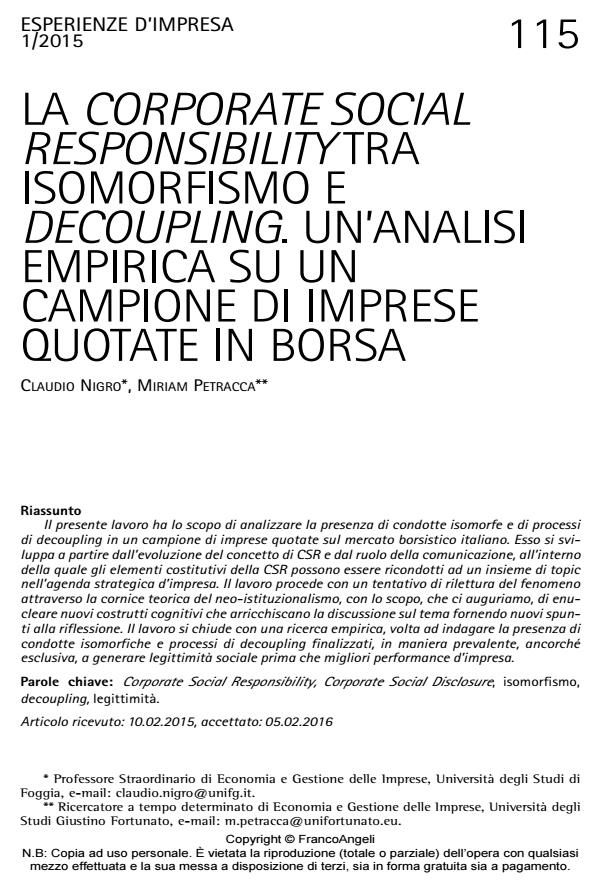La corporate social responsibility tra isomorfismo e decoupling. Un’analisi empirica su un campione di imprese quotate in Borsa
Journal title ESPERIENZE D'IMPRESA
Author/s Claudio Nigro, Miriam Petracca
Publishing Year 2016 Issue 2015/1
Language Italian Pages 21 P. 115-135 File size 363 KB
DOI 10.3280/EI2015-001006
DOI is like a bar code for intellectual property: to have more infomation
click here
Below, you can see the article first page
If you want to buy this article in PDF format, you can do it, following the instructions to buy download credits

FrancoAngeli is member of Publishers International Linking Association, Inc (PILA), a not-for-profit association which run the CrossRef service enabling links to and from online scholarly content.
This work aims to verify the presence of isomorphic conducts and decoupling process within a sample of enterprises listed on the Italian Stock Exchange. It starts with the evolution of CSR construct and with the role of the communication in which the constituent elements of CSR can be led back to a set of topics in the strategic business agenda. The work continues with an attempt to reinterpret the phenomenon throughout the theoretical framework of new institutionalism, with the aim to identify new cognitive constructs that enrich the discussion on the theme by providing new food for thought. The work ends with an empirical research, aimed at investigating the presence of isomorphic conducts and decoupling process finalized, mainly or exclusively, to generate social legitimation before than better business performance.
Keywords: Corporate Social Responsibility, Corporate Social Disclosure, isomorphism, decoupling, legitimacy.
Claudio Nigro, Miriam Petracca, La corporate social responsibility tra isomorfismo e decoupling. Un’analisi empirica su un campione di imprese quotate in Borsa in "ESPERIENZE D'IMPRESA" 1/2015, pp 115-135, DOI: 10.3280/EI2015-001006